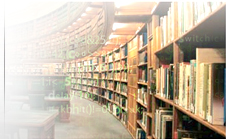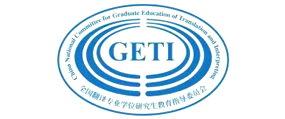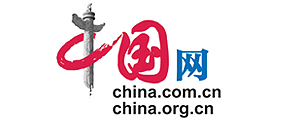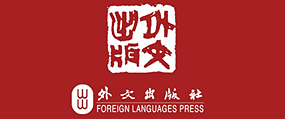目录
译论研究 翻译学的何去何从 孙艺风 5
论翻译学研究方法 玛丽安·勒代雷 著 刘和平 译 11
译史纵横
文虽左右,旨不违中——蠡勺居士翻译中的宗教改写探析 张政 张卫晴 19
书刊评介
译学研究的反思与前瞻——评《翻译学概论》 董娜 23
学人访谈
翻译研究目标、学科方法与诠释取向——与费乐仁教授谈翻译的跨学科研究 费乐仁 岳峰 27
翻译教学
构建MTI教育特色课程——技术写作的理念与内容 苗菊 高乾 35
本科翻译专业培养模式的探索与实践——谈北京外国语大学翻译专业教学理念 吴青 39
典籍翻译
后殖民翻译理论观照下的赛珍珠《水浒传》译本 张志强 44
赛珍珠以汉语为基础的思维模式——谈赛译《水浒传》 董琇 49
译技探讨
“契约”概念翻译:比较法律文化的探究 林巍 55
以目的语为依归的外宣英译特质——以《南京采风》翻译为例 袁晓宁 61
论经贸术语译名的统一与规范——一项基于经贸英汉词典的研究 李海峰 65
汉语标点符号需要进一步规范和完善——从译者角度发出的一项呼吁 孙致礼 周晔 70
学术争鸣
翻译研究﹑学术规范与文化传统 张南峰 73
勿以善小而不为—评当前国际关系理论研究领域若干译著质量 赵念渝 81
自学之友
英译汉:The Dumbest Generation (Mark Bauerlein) 叶子南 译 86
翻译导读:理解精准方可表达到位 叶子南 87
汉译英:毋忘振羽(侯外庐) 刘士聪 高巍 译 90
翻译导读:为了译文的衔接与连贯 刘士聪 高巍 92
英文摘要 94
用语选译
国务院副总理李克强会见瑞士知名企业家的演讲(节选) 96
信息广角
《中国翻译》杂志敬告投稿者、本刊稿约(93)
2010年暑期全国高等院校翻译专业师资培训一号通知(封二)
《中国翻译》创刊30周年暨出版200期翻译研究有奖征文揭晓(封三)
本刊邮购信息(89)其它(26、43、54、80)
中文摘要
翻译学的何去何从孙艺风 香港岭南大学
摘要:翻译学在摆脱了依附应用语言学的桎梏之后,获得了较为广阔的学术(科)发展空间, 以突破学科限制为标志的文化转向又为译学研究注入了强大的活力。翻译学在上个世纪90年代经历了学科大发展并奠定了学科身份之后,一直以跨学科探索为研究特色,注重多元文化互补、不同学科彼此交融,逐步形成了开放性、多角度、多层次的特点。与此同时,寻求学科新突破的各种尝试使译学研究产生了此起彼伏的转向,以致对翻译本体的“偏离”似 乎大有愈演愈烈的趋势,由此而来的问题是,译学研究在经过了若干范式转换后,似乎又面临学科身份合法性的挑战。如何在扩展学科领域时突出学科本体,是值得 关注的问题。本属不同学科领域的研究方法和学术范式,被借鉴到译学研究领域后,其相互促进的空间又有多大,需要深入思考。
关键词:学科定义;跨学科;身份嬗变;文化转向
中图分类号:H059 文献标识码:A 文章编号:1000-873X(2010)02-0005-06
论翻译学研究方法①
【法】玛丽安·勒代雷著巴黎新索邦第三大学/巴黎高等翻译学校刘和平译北京语言大学
摘 要:目前,口译研究方法主要有两类,一类倾向于人文研究,另一类则偏重自然科学研究。本文对这两种方法进行了回顾和分析。主张自然科学的学者多采用实证研 究方法,根据朗读思考协议进行试验,然后对其统计数据进行研究;另一种倾向于人文研究的学者则采用论证、反思、定性和阐释等方法。两种方法之间存在争议。 作者希望采用不同方法的两类学者不要相互指责,而是为了翻译学研究的美好未来相互合作。
关键词:人文研究;自然科学研究;研究方法;实证研究方法;论证方法
中图分类号:H059 文献标识码:A 文章编号:1000-873X(2010)02-0011-08
文虽左右,旨不违中
─蠡勺居士翻译中的宗教改写探析*
张政 北京师范大学 张卫晴 北京工商大学
摘要:本文通过对我国近代首部汉译西方小说《昕夕闲谈》翻译中宗教内容的改写为例,探讨制约译者的三个文化要素:社会意识形态、出版人的意识形态和译者的诗学形态,并分析这些文化因素对蠡勺居士翻译手段及其翻译指导思想的影响,为进一步研究近代文学翻译提供理据。
关键词:蠡勺居士;翻译;基督教;改写
中图分类号:H059 文献标识码:A 文章编号:1000-873X(2010)02-0019-04
翻译研究目标、学科方法与诠释取向─与费乐仁教授谈翻译的跨学科研究
费乐仁 香港浸会大学 岳峰 福建师范大学
摘要:本文是从事翻译研究的中国教授与从事人文学科研究的美国教授的对话,旨在探索翻译的跨学科研究的关联性,论证了史学、宗教学、哲学与文化学的研究方法可以相当程度上提升对文化色彩浓厚的文本─尤其是典籍的文本─的 翻译研究。文章从宏观与微观的视角强调历史意识的关联性与把握文化的多样性与复杂性的必要性,阐明研究者应恰当地自我定位,在分析历史背景信息与译者的思 维模式的关联时力求学科共振的意识与效果。文章由此解释了翻译的文本外因素的关联性,比如译者的措辞与其意识的关系,译者动机、个性与译本的风格的关系。 文章所倡导的操作方式有助于保证译本诠释的精确性。
关键词:跨学科性;翻译研究;方法论;诠释取向;关联性
中图分类号:H059 文献标识码:A 文章编号:1000-873X(2010)02-0027-08
构建MTI教育特色课程——技术写作的理念与内容*
苗菊 高乾 南开大学
摘要:本文借鉴国外大学培养职业翻译人才的经验,介绍了技术写作的理念与内容,从技术写作与科技翻译、本地化服务的相关性及其对职业译者的重要性来说明技术写作对翻译行业发展的重要意义,并对翻译硕士专业MTI教育中技术写作课程设置提出了具体的建议。
关键词:技术写作;翻译硕士专业;翻译教学;课程设置
中图分类号:H059 文献标识码:A 文章编号:1000-873X(2010)02-0035-04
后殖民翻译理论观照下的赛珍珠《水浒传》译本
张志强*河南师范大学
摘要:后殖民翻译理论关注不同民族、不同语言文化间的不平等权力关系,认为翻译视其目的、策略与方法,既可以成为殖民霸权的共谋,也可以成为消解文化霸权和“种族中心主义”的力量。翻译中的杂合是语言文化交流的必然产物,具有彰显文化差异、促进文化间平等交流的积极作用。赛珍珠《水浒传》译本是一个较为典型的杂合文本,译文兼具汉语语言文化与英语语言文化的双重特质,对消解西方文化霸权具有积极意义, 对当下的中外文化交流、特别是中国文化文学的对外传播,具有较大的启迪意义。
关键词:后殖民理论;翻译;赛珍珠;《水浒传》;杂合
中图分类号:H059 文献标识码:A 文章编号:1000-873X(2010)02-0044-05
赛珍珠以汉语为基础的思维模式——谈赛译《水浒传》
董琇* 同济大学
摘 要:译者的思维特点和潜意识直接影响着翻译策略的选择和译文的风格,本文摆脱以往评价具体译文质量优劣的角度,从译者的思维模式探究赛珍珠《水浒传》的翻 译。赛珍珠创作与翻译呈现相同的思维过程,写作小说首先用中文组织,再将汉语译为英语,此乃英译汉语经典著作的最佳状态。而独特的思维模式促使了其边听边 译的特殊翻译过程的产生,思维模式的形成又与赛的语言能力和文化态度具有密不可分的关系。
关键词:赛珍珠;翻译;思维模式
中图分类号:H059 文献标识码:A 文章编号:1000-873X(2010)02-0049-06
“契约” 概念翻译:比较法律文化的探究
林巍 澳门理工学院
摘要:“契约”是法律文化中的一个基本概念,构成了法律社会的核心内容。正因如此,这又是一个涵义广泛而复杂的概念,在翻译中时出偏差。本文围绕“契约”以及与其紧密相关的“契约精神”、“合同”、covenant、compact、contract、promise、agreement等中英“契约语言”在翻译中的辨析,以中西法律文化比较为背景,从两岸四地的视角,通过具体实例的分析,试图从更准确、更立体的方位,探究其丰富的翻译内涵。
关键词:契约;契约语言;比较法律文化;法律翻译
中图分类号:H059 文献标识码:A 文章编号:1000-873X(2010)02-0055-06
以目的语为依归的外宣英译特质*——以《南京采风》翻译为例
袁晓宁 东南大学
摘要:在外宣英译中,译者应根据“外宣三贴近”原则,以目的语为归宿,设法处理好英汉在文化、逻辑、风格等方面的差异,使译文在语篇结构、句法结构、语体风格、表达方式等方面符合目标语读者的习惯,从而让其明白无误地获取译文所要传递的信息,达到外宣英译的目的。
关键词:外宣英译;语篇结构;句法结构
中图分类号:H059 文献标识码:A 文章编号:1000-873X(2010)02-0061-04
论经贸术语译名的统一与规范——一项基于经贸英汉词典的研究
李海峰 四川外语学院
摘要:本文从英汉词典尤其是经贸类英汉词典中术语的译名入手,结合英美和中国经贸专业报刊里出现的专业术语讨论经贸术语译名存在的主要问题:把“规范”等同于“统一”,望文生义造成译名错误和违反约定俗成。要解决上述问题,必须作好以下三点:一是根据经贸的行业分类优化词典编纂的人力资源;二是从中国经贸专业期刊吸收新术语的译名;三是对经贸术语进行实证研究,以便规范译名。
关键词:经贸术语;词典;译名;规范;统一;人力资源优化
中图分类号:H059 文献标识码:A 文章编号:1000-873X(2010)02-0065-05
翻译研究﹑学术规范与文化传统
张南峰 岭南大学
摘 要:中国当代的翻译研究,大量借用西方的理论和模式,但并未广泛认同西方的主流学术思想和规范,例如区分研究和研究对象、区分纯研究和应用研究、学术自 主、中立客观等等,仍然存在应用导向、价值判断、忽视论证、民族主义等现象,因而对西方理论有些误解。直接的原因,是中国的人文学术系统,仍与政治和权力 系统关系密切。更深层的原因,则是西方的工具必然带有西方的价值观,而中华文化的传统价值观并未因西方工具的引进而发生相应的变化,结果是“中体”与“西用”出现了不协调。
关键词:翻译研究;学术;规范;文化传统;价值观
中图分类号:H059 文献标识码:A 文章编号:1000-873X(2010)02-0073-08
CONTENTS
The Development of Translation Studies Sun Yifeng 5Research Methods in Translation Studies Marianne Lederer Trans. by Liu Heping 11
What Determines the Translator,s Choice of Techniques: Religious Rewriting in Lishao Jushi,s Rendering of Night and Morning Zhang Zheng & Zhang Weiqing 19
The Goal of Translation Research, Disciplinary Tools and Hermeneutic Orientations: A Cross-disciplinary Dialogue with Professor Lauren Pfister Lauren Pfister & Yue Feng 27
On Constructing a Specific Course of Instruction for MTI: The Philosophy and Content of Technical Writing Miao Ju & Gao Qian 35
All Men Are Brothers: A Postcolonial Approach to Pearl S. Buck,s Translation of Shui Hu Zhuan Zhang Zhiqiang 44
Thought Pattern Displayed in Pearl S. Buck,s Translation Dong Xiu 49
Translating the Concept of “Contract”: A Comparative Legal Cultural Approach Lin Wei 55
Centering on the Target Audience,s Response as a Principle in Publicity-oriented C/E Translation Yuan Xiaoning 61
On the Standardization and Unification of Translated Business Terms Li Haifeng 65
Translation Studies, Academic Norms and Cultural Traditions Chang Nam Fung 73
E/C Translation Practice: The Dumbest Generation (Mark Bauerlein) Ye Zinan 86
C/E Translation Practice: Bear Zhenyu in Mind (Hou Wailu) Liu Shicong & Gao Wei 90
Abstracts of Major Papers in This Issue 94
English Abstracts of Major Papers in This Issue
The Development of Translation Studiesby Sun Yifeng (Lingnan University, Hong Kong,China) p. 5
Abstract: After rejecting the shackles of its overdependence on applied linguistics, Translation Studies began to create a relatively broad space for academic (disciplinary) development, and the cultural turn distinguished by transcending disciplinary boundaries has brought great vitality to translation research. Since experiencing considerable disciplinary expansion in the 1990s with its identity established accordingly, Translation Studies has been identified with interdiscipline, focusing on multicultural complementarity and interdisciplinary exchange. The discipline is now characterized by open approaches from multi-perspectives and at different levels. Meanwhile, various attempts to advance disciplinary breakthroughs have engendered a series of “turns.” And there seems to be a growing tendency for research to “deviate” from the ontology of translation. The resulting problem is that after several major paradigm shifts, the challenge of the legitimacy of the discipline has to be answered. How to foreground the ontology of the discipline in its expansion is a matter of concern. Also, to what extent can research methodologies and academic paradigms of different disciplines interact in the field of translation research requires further investigation. To consolidate the basis for continuous innovation is essential to the vitality and influence of Translation Studies.
Key words: disciplinary definition; transdisciplinarity; changing identity; cultural turn
Research Methods in Translation Studies
by Marianne Lederer (University of Paris III-Sorbonne Nouvelle, Paris, France)
Trans. by Liu Heping (Beijing Language and Culture University, Beijing, China) p. 11
Abstract: TS scholars currently divide into two groups: one is oriented towards the humanities, and the other towards the natural sciences. The paper reviews the research methodology applied by each. Both gather data, observe it and try to explain it, however, each does it differently: the method used by the humanities-oriented group is argumentative, reflexive, qualitative and interpretive. The natural science group does empirical research, sets up experiments such as Think Aloud Protocols and uses statistics. At present, there is a gap between the two. The strengths and weaknesses of their respective methods are reviewed. In conclusion, it is hoped that, rather than reproaching each other, the two groups should cooperate for the best profit of TS research.
Key words: the humanities sciences; the natural sciences; research methodology; empirical research; argumentative method
The Goal of Translation Research, Disciplinary Tools and Hermeneutic Orientations: A Cross-disciplinary Dialogue with Professor Lauren Pfister
by Lauren Pfister (Hong Kong Baptist University) & Yue Feng (Fujian Normal University, Fuzhou, China) p. 27
Abstract: This dialogue between a Chinese translation scholar and an American professor in the humanities explores the relevance of cross-disciplinary studies for translatology. The interlocutors look into why methodologies drawn from the disciplines of history, religious studies, philosophy and cultural studies could significantly enhance research on the translation of heavily culture-loaded texts, especially that of ancient classics. They reexamine from both a macro- and a micro-perspective the pertinence of historical consciousness, the need to understand cultural diversity and complexity, and the desirability to achieve analytic resonance between historical background and the translator,s thinking mode in relation to the researchers’ self-location. The discussion directs attention to the importance of extra-textual elements for translation studies. Paying attention to how extra-textual elements such as the translator,s ideology, motivation or personality affect her diction or style in general will help to guarantee hermenutic precision in translation studies.
Key words: cross-disciplinary; translation research; methodology; hermeneutic orientation; relevance
All Men Are Brothers: A Postcolonial Approach to Pearl S. Buck’s
Translation of Shui Hu Zhuan
by Zhang Zhiqiang (Henan Normal University, Xinxiang, China) p. 44
Abstract: Concerned centrally with the asymmetrical power relations between nations, languages and cultures, postcolonial translation theories hold that depending on the purpose served and the strategies adopted, translation can either collude with the colonialist powers or serve as a force in the fight against cultural hegemony and ethnocentrism. As an approach to translation which presupposes an equal exchange between languages and cultures, hybridization tends to affirm cultural differences and thus to play a positive role in addressing the postcolonial conditions. Pearl S. Buck,s translation of Shui Hu Zhuan (All Men Are Brothers) is a typical hybrid text, for in giving salience to the features of both the Chinese and the English languages and cultures, it undercuts the hegimonic agenda of the West and contributes to the dissemination of Chinese culture and literature over the world.
Key words: postcolonial theories; translation; Pearl S. Buck; Shui Hu Zhuan (All Men Are Brothers); hybridization
Thought Pattern Displayed in Pearl S. Buck’s Translation
by Dong Xiu (Tongji University, Shanghai, China) p. 49
Abstract: The translator,s subconscious thought pattern has a direct impact on her choice of strategy and the shaping of her style. Guided by this general assumption, the article takes another look at Pearl S. Buck,s mode of thinking in an attempt to better comprehend her way of translation. The study finds that the thought patterns displayed respectively in Buck,s translating and in her writing are almost identical. When writing about Chinese subject matter, she would mentally construct a narrative in the Chinese language first and then have it rendered into English, which coincides with what has been regarded as an ideal approach to turning a classical Chinese novel into English. As a translator, she tended to adopt the mode of “translating while listening,” which is consistent with a thought pattern taking shape as a result of her linguistic strength and cultural attitude.
Key words: Pearl S. Buck; translation; thought pattern
Translating the Concept of “Contract”: A Comparative Legal Cultural Approach
by Lin Wei (Macau University of Science and Technology, Macau, China) p. 55
Abstract: As a basic concept of legal culture, contract functions as a key term in any society of law. Yet the term is so peculiar and complicated that its translation is liable to errors. This paper addresses the problems besetting the translation of contract and its associated expressions such as “the spirit of contract,” “covenant,” “compact,” “promise,” and “agreement,” taking into consideration and comparing the way the legal cultures differ in the four regions comprising the Greater China, in an attempt to disclose and explore the rich implications this case has for legal translation as a whole.
Key words: contract; language of covenant; comparative; legal culture; legal translation
Translation Studies, Academic Norms and Cultural Traditions
by Chang Nam Fung (Lingnan University, Hong Kong, China) p. 73
Abstract: Even though it has been relying heavily on theories and models imported from the West, contemporary translation studies in China has yet to come to terms with certain key Western concepts and norms, such as the distinction between the meta- and the object-level, between pure and applied research, or between academic autonomy and neutrality. The inconsistency accounts in part for the application orientation, value judgments, unsubstantiated assertions and nationalistic sentiments one finds in Chinese discourse on translation, and for Chinese scholars’ liability to misunderstand Western theories as well. A deeper cause for the above-mentioned problems is to be found, however, in the close relationship the Chinese academic system still maintains with politics and power, and in the discord between the Western tools in use and a traditional value system that remains entrenched.
Key words: translation studies; academic; norms; cultural traditions; values

















